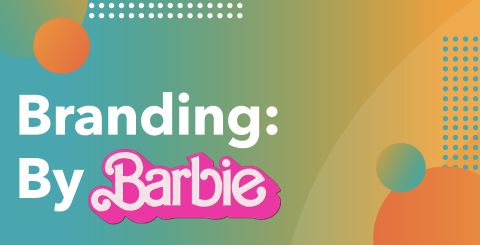Branding: By Barbie
The Barbie Movie has proven to be more than a successful movie; but a noteworthy brand and marketing strategy. The film has become a smash hit, and it's worked to elevate the popularity of the brand. Here's what we can learn from this campaign:
Powerful Storytelling. Relatable stories connect with your audience. An effective marketing campaign introduces a problem or poses a question, then explains how your product or service can solve it.
Collaboration. The Barbie Movie campaign partnered with other successful brands, like Airbnb, clothing lines, cosmetic companies, etc. Collaboration adds credibility, so try partnering with another business next time you promote an event or service.
Diversify Promotion. There are many roads to your brand. Spread your presence over appropriate social, television, print, and online platforms. Advertise on the channels your target audience uses.
Brand & Emotion. There's no doubt that nostalgia played a large part in the overall Barbie excitement. Using your brand to impact your audience emotionally has immeasurable potential.
The Barbie Movie is just one example of an integrated, well-planned marketing strategy that worked to breathe new life into an existing brand. Could you use some air in your tires? There are many ways that brand elevation can be successfully achieved. Seek the support of an experienced firm that embraces the tools of today, coupled with the traditional wisdom of all aspects of marketing.
https://blog.businessbuildersmarketing.com/what-does-it-mean-to-be-on-brand
What Does It Mean to be On BrandSimply put, being 'on-brand' means anything that is created for a company should be in alignment with its brand. This 'anything' refers to marketing collateral such as flyers, brochures, postcards, mailers, logo design, signage, website design, newsletters, etc. To be effective, all of these should reflect who you are as a company, speak to your audience, and look visually consistent. What isn't always realized is that being on-brand can go beyond the visual aspect.
Your Brand Isn't Just Your Company's Logo, Name, and Colors
Often when we think of a brand, the first things that come to mind are a company's logo, name, and colors they consistently use. Paul Rand, a famous art director and graphic designer from the 1900s, said, "Design is the silent ambassador of your brand," which still rings true today. The logo, colors, marketing collateral, and even the name of the company are all a reflection of the company and whom that company serves. Your brand is the whole story – from visuals to the language written on those materials.
Not Being On-Brand Causes Confusion
Visuals and language that are not on-brand will end up hurting your company. When the logo is misused, when the colors on a flyer clash with what is on your website, and when a formal design, for example, is presented with language that sounds laid-back, these send mixed messages to your consumers. These mixed messages will leave consumers confused, making it difficult to remember your brand. Trust and familiarity, two of the most important aspects of customer retention, will be diminished unless careful action is taken to preserve the brand.
A Consistent Brand Builds Trust
It is essential that all aspects of a brand are presented in line with one another. When everything is on-brand and consistent, your audience will have an easier time remembering your brand, leading to customer retention and success. Call Business Builders at 309-827-7977 to see how our professionals can help keep your company on-brand.
